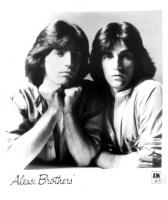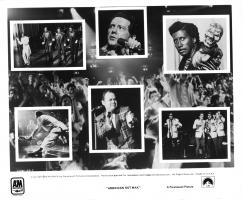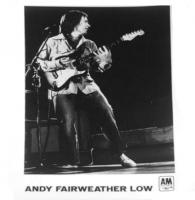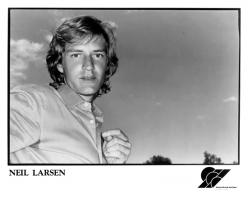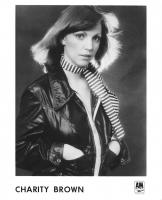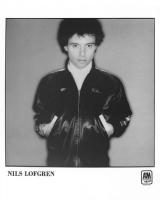WINDHAM HILL RECORDS

“I was courted by every major record label in the country, but working with Herb [Alpert] made sense.
A&M wasn’t corporate-owned. All these artists we were signing suddenly had access to the world market.
There was never a hidden agenda. We didn’t have to compromise. A&M facilitated.”--William Ackerman
WINDHAM HILL RECORDS HISTORY
William Ackerman founded Windham Hill Records in 1976. The label was a division of Windham Hill Productions that offered full-service management, booking and public relations. Ackerman borrowed $300 to record his album In Search Of the Turtle's Navel. The original copies of the album have hand-pasted sleeves. A friend sent a few to California radio stations. The airplay created orders for the albums.
Windham Hill's word mark was first used commercially in 1976. It was filed with the U.S. Patent Office on June 24, 1982 and registered on May 17, 1983. The original Windham Hill logo (line art) was also put into commercial use in 1976. Its trademark filing date was October 12, 1984 and it was registered on April 2, 1985. After Windham Hill was sold to BMG, the line art logo was updated into solid color fills and remains in use.
Windham Hill Records and A&M Records reached a distribution agreement in 1982. Windham Hill would remain with A&M until A&M was bought by PolyGram in 1989. "I went with A&M," comment[ed] Ackerman, "because it was the only label that showed any intelligence. They didn't want to usurp us, but to facilitate us. I kept telling them what they couldn't do--till finally Jerry Moss yelled at me, "Look, Will, we really don't understand this! We just want you to shut up and go do it!" Ackerman told Cashbox, "A&M has given me the option to create as many labels as I want, release as many or as few records as I want."
Descriptions of the music in the Windham Hill catalog were debated. Its earliest recordings were solo guitar and then other acoustic instruments and the label was quickly slotted as a "folk music." Even Billboard had a difficult time categorizing Windham Hill Music. In 1983, they called it "soft jazz" and in 1986 it was "new age." The label continued to confound by adding music groups to its roster of solo artists, and electronic instrumentation to a catalog of acoustic recordings. William Ackerman wrote that Windham Hill was "a viable alternative to the dictates of large record labels" and would "continue to offer new directions and new alternatives in music."
USA Today reported that from its founding in 1976 until mid-June 1984, Windham Hill Records grew at least 181% annually. President Anne Robinson was quoted, "We really did start with $300 in capital which has been reinvested and we've never borrowed a cent." ("The Lilting Landscape of Windham Hill" by Neil Tesser, June 14, 1984.)
The first Windham Hill Records were released in Britain in November 1985. In February 1986, Will Ackerman visited the U.K. and A&M launched a new press, radio and television campaign white retailers received promotional leaflet, poster, bin dividers. The November release allowed A&M Records, Ltd. to create awareness of Windham Hill during the holiday buying season and the campaign continued to build interest.
Windham Hill created a number of subsidiary labels. Lost Lake Arts reissued albums licensed from former owners. It entered a manufacturing and distribution deal with Andy Narell's Hip Pocket Records. Magenta Records would be Windham Hill's first jazz label.
By 1987, Windham Hill had taken the long way to establish itself. When the label began, there was almost no radio support for instrumental music. When radio did accept instrumental music as a format, it failed to identify the artist. Windham Hill artists toured extensively and Windham Hill staff promoted the artists and products, finally creating the dedicated product bins still found in retail today.
Windham Hill actively sought find its audience. It established an exclusive mailing list by including a flyer in the record jacket. Consumers opted onto the list to receive Windham Hill Occasionals. These were direct mail catalogs featuring recordings, videos, tee shirts, tour itineraries. Produced four times a year (one for each season), the first was issued around May 15, 1985. Windham Hill maintained a private mailing list that consumers could opt to join. The Occasionals were released throughout Windham Hill's association with A&M Records.
Windham Hill also surveyed its consumers and found that it had a very active adult market that was interested in information about the artists. The listeners were flooding radio stations with requests for songs and for artist and title information.
Windham Hill Records Billboard Pop chart success was with only with its albums. George Winston was the first Windham Hill artist to have success on the Billboard Pop Album chart. In 1982, he had a Top 100 and Top 200 album. In both 1983 and 1984, Shadowfax placed an album in the Top 200. Winston was back again in 1985 with a Top 200 album.
Ironically, the Windham Hill sampler series by various artists were regulars on the Billboard Pop Album chart. The samplers were made from demo tapes sent to Windham Hill. They started out as in-store and radio promotional pieces but became standard releases. In 1985, they were in the Top 100 and Top 200; in 1986, two samplers were in the Top 200, and again in 1988 two samplers were in the Top 200.
While Windham Hill was not often on the Billboard Pop chart, it dominated the Billboard New Age chart and its successor, the Contemporary Jazz chart throughout the 1980s. Music industry associations recognized Windham Hill artists. Among the awards, three gold and three platinum RIAA certifications for George Winston; Cash Box awards for Best Soloist--Jazz (George Winston) and New Group of the Year--Jazz (Shadowfax).
Windham Hill records were known for their distinctive cover graphics. Inside the jacket, Windham Hill used a high-quality vinyl for its discs and heavy plastic liner sleeves. Windham Hill also insisted that only Bernie Grundman at A&M be the one to master their records. To complete its emphasis on quality, Windham Hill enclosed an insert or a pamphlet explaining its policy on defective records "correct the problem in the shortest time possible." Finally, Windham Hill used an outer plastic bag that was perforated on one edge that the album could be stored in and preserved the album cover.
Windham Hill, while it said it did not want to enter the home taping debate of the mid-1980s, took the unusual step of including a statement from founder William Ackerman with its records. "Windham Hill is a community of artists who depend upon the income from the sale of their records and concert appearances for their livelihood. I ask only that everyone weigh the possible economic impact on Windham Hill and the artists represented by the label in the taping of our records. This record label, though wishing to be profitable and thereby viable, was not born of greed, but rather to produce music of the highest quality. In all respects we count on you people to support our efforts, and for your help we are all sincerely grateful."
In 1982, Windham Hill entered a distribution agreement with A&M Records. Through this arrangement, Windham Hill was able to begin international distribution in 1984.
In 1985, Windham Hill entered the CD market. It stated that its CDs would have more music on them than vinyl albums to justify the higher price of the CDs. Likewise, Windham Hill cassettes could add additional music to balance both sides of the tape. In February the first six albums by Windham Hill artists were released in England on compact disc. The artists were Will Ackerman (Passage), Liz Story (Solid Colors), George Winston (December), Mark Isham (Vapor Drawings), Shadowfax (Shadowdance) and An Evening With Windham Hill Live. A&M Records licensed the recordings to PRT Records.
In the Fall of 1985, Windham Hill, Paramount Home Video and Pioneer Laserdisc released four one-hour videos. Each sold for $30 and was available in VHS and Beta formats. The titles were Water's Path, Western Light, Winter and Autumn Portrait. The advertising insert included with Windham Hill's albums stated that the videos "explored geographical and seasonal themes in nature" that "created an artistic and quality alternative in video."
To launch Windham Hill Records in the UK in November 1985, A&M Records suppled Marantz, maker of audio equipment, with Windham Hill samplers for in-store demonstrations, Windham Hill leaflets, and sampler CDs and cassettes as consumer incentives. The first batch of Windham Hill products included 12 albums and a 10-track sampler on udiophoile vinyl, CD and cassette. Posters and leaflets were used to promote in-store and a trade with a consumer advertising campaign. The first releases wereWilliam Ackerman--Passage and Past Light, Liz Story, George Winston--Autumn, Winter Into Spring and December, Shadowfax--self-titled album and Shadowdance, Mark Isham--Vapor Drawings and Film Music, Scott Cossu--Islands, Michael Hedges--Aerial Boundaries, Alex DeGrassi--Southern Exposure, and the compilation An Invitation to Windham Hill).
In 1986, Will Ackerman elected to leave the chief executive position at the label. Anne Robinson replaced Ackerman as he focused on Windham Hill's creative direction. The label created a sampler and tour and conducted a marketing push in Australia.
In 1986, Windham Hill entered the children's record market in association with Rabbit Ears Storybook Classics, a division of Random House Publishers. The idea belonged to Mark Sottnick, a film producer. He believed that there could be better books and music made for children. Rabbit Ears teamed top actors like Meryl Streep, Glenn Close, Cher and Robin Williams with musicians to retell classic children's stories. Released on both vinyl and CD, the CDs contained extra music. Animation was added to the recordings and these appeared on Showtime television and on Sony Home Video. The first record, The Velveteen Rabbit, by Meryl Streep and George Winston (originally on affiliate Dancing Cat Records) was the best selling children's record of the year. The series won the Best Children's Recording Grammys in 1988 and 1989, plus awards from Parents' Choice, the American Library Association, and the New York Times Best Illustrated Music Book.
In February A&M created a promotional campaign for the original albums from November 1985. The promotion coincided with Ackerman's visit to the UK to do radio, television and press interviews. With the Marantz tie-in plus retail posters and bin dividers, A&M intended to run the campaign throughout the year.
Finally, during the summer of 1986, Living Music joined Windham Hill in a distribution agreement.
In 1987, Windham Hill replaced its jazz imprints Hip Pocket and Magenta (started by Steve Backer) with Windham Hill Jazz. The catalogs from both labels were reissued with the Windham Hill Jazz logo. Andy Narell's The Hammer was the first album to carry the new logo. A total of eight albums were planned for release in 1988. As Windham Hill stated, "Windham Hill Jazz has acted on a simple premise: We are building a small family of new and developing artists whose personal styles may be diverse but who, in common, draw significantly from the jazz art form."
For the Christmas season in 1987, Windham Hill offered a 6% discount on 13 of its titles. Windham Hill promoted the discounts with 30-second commercials on CNN that tagged eight major retailers. A new promotional sampler cassette, New from Windham Hill, (21,500 copies) was created for radio use and giveaways.

The Windham Hill Jazz line art logo was first used commercially on June 16, 1987. Its patent history included filing on January 23, 1989 and registration on August 29, 1989. For the adult market, they offered discounts and promotions to gain sales and market growth for its catalog.
In 1988, Will Ackerman was quoted in Billboard, "I want the label to become far more aggressive in A&R. If we want to be in this business for the long term, we can't allow ourselves to become trapped in a corner with a limited musical perspective. We don't want to get caught up in a cycle of self-imitation...we no longer will eschew things that are assumed to be outside the parameters of our image. There is a decree written in blood at Windham Hill that we are not accepting any more solo piano demos from anyone." Windham Hill was going to enter the pop and rock markets.
In April 1988, again with Paramount Home Video, Windham Hill released three more videos in Beta and VHS for $30 each. These were China, In Concert and Seasons. Windham Hill also packaged the first four videos into a gift set that it offered for $99.00.
Prior to the sale to PolyGram in 1989, A&M Records and its affiliates product were distributed by BMG. Upon the sale, Windham Hill arranged to have BMG continue distributing its products. In 1992, BMG bought Windham Hill.
Windham Hill Occasional Spring 1989
Windham Hill Occasional Summer 1989
Windham Hill Catalog and Occasional Holdiay 1989
Hear the Commotion New Releases Fall 1989
SOURCES:
www.windham.com (defunct Windham Hill Records web site)
Windham Pushes Sales, Label Uses Discounts, Promos. Chris Morris. Billboard, November 21, 1987.
Policy statements from Windham Hill Records album inserts.
Windham Hill Catalog and Occasional, Holiday 1989.
Soft Music: What a Grind. N. R. Kleinfield. The New York Times, November 8, 1992.
Will & Anne Ackerman, New Age Music Execs. Jeffrey Ressner. Cashbox, January 28, 1984.
Will Ackerman Presents Windham Hill Reunion Concert In Napa. Dan Taylor. Santa Rosa, CA The Press Democrat, December 17, 2019.
Whitburn, Joel. Joel Whitburn's Top Pop Albums 1955 - 1996. Menomonee Falls, WI: Record Research, Inc., 1996.
Whitburn, Joel. Top Pop Singles 1955 - 1999. Menomonee Falls, WI: Record Research, Inc., 2000.

